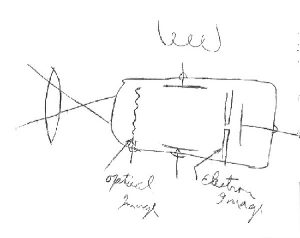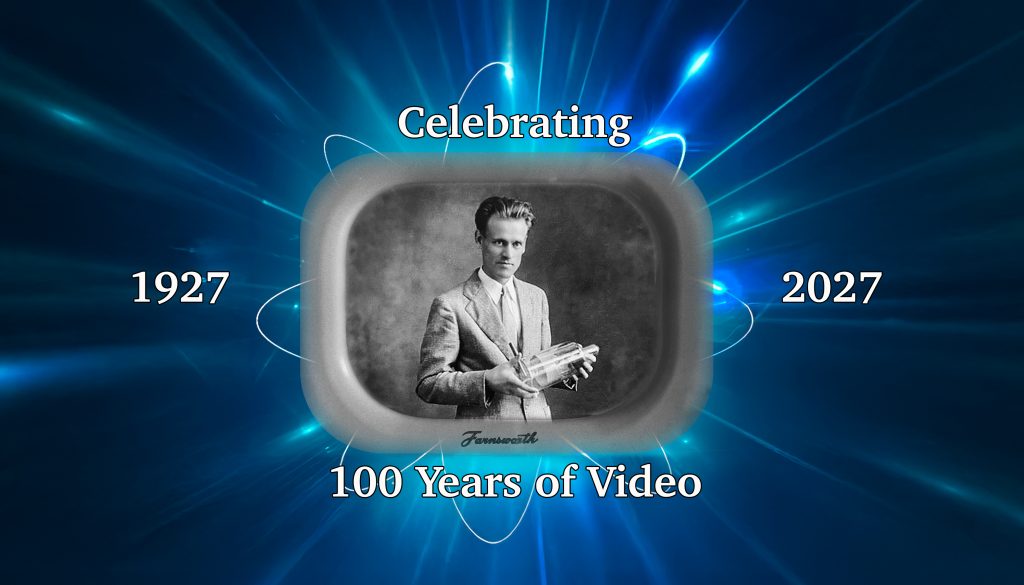“To have the right idea is one thing.
To have the right idea and make it work is everything.”
– Roger Penrose
___________________
Having the right idea and making it work – that is what Philo T. Farnsworth did nearly 100 years ago.
In the 1920s, while the great minds of science wrestled with 19th century solutions to a 20th century problem, a teenager plowing a field in Idaho dreamed of trapping light and transmitting it one-line-at-a-time on a magnetically deflected beam of electrons.
Every video screen on the planet – including the one you are looking at now – can trace its origins to a sketch that 14-year-old Philo T. Farnsworth drew for his high school science teacher in 1922:

The idea embodied in this sketch was demonstrated for the first time on a workbench in San Francisco on September 7, 1927. That achievement was recreated for the 50th anniversary in 1977:
An effort is now under way to celebrate that achievement. We have a little more than three years to organize the Centennial of that historic occasion. So it’s not too soon to start planning
PHILO T. FARNSWORTH DAY*
SEPTEMBER 7, 2027
… to commemorate the first 100 years of video – and give this seminal genius the recognition he has long been denied.
To foster this initiative a non-profit organization –The Waterstar Foundation – has been formed.
Our first, modest, short-term goal is to obtain sufficient funding to mount an international social media campaign to promote awareness of the coming anniversary.
Then, if adequate funding can can be secured, then the big goal will be to acquire the building in San Francisco where television was invented and convert part of it into an exhibit/museum that celebrates the history of video technology. Ideally, the museum would open its doors to global acclaim on September 7, 2027.
With our giant flat panel displays and handheld computers, from Netflix to TikTok, we take video entirely for granted today – unaware of what a breakthrough it was in its time.
It was not until Philo Farnsworth applied the theories of Albert Einstein** to the challenge that the world of screens we now live in became possible. By conceiving and building an entirely electronic video system in the 1920s, Farnsworth achieved an epic breakthrough in what humans could do to with quantum forces and particles.
That we are not more familiar with Farnsworth – or how he changed the world – is one of the oddities of history and a culture that reveres innovation.
We have three years to correct that oversight.
Will you join the crusade?
For more information, contact the sponsors, follow our Facebook Page or sign up for the TVCentennial e-newsletter:
_____
*Or whatever we decide to call it…
**Einstein is most often associated with E=mc2 and the atomic bomb. What is lost to history is that his first theories made television possible decades before anybody figured out how to split an atom. When discussing his Oscar-winning feature Oppenheimer, Christopher Nolan likes to say “we live in Oppenheimer’s world…” But unless we all have an atomic bomb in our living room, we actually live in Farnsworth’s world – and Christopher Nolan made the wrong damn movie!

